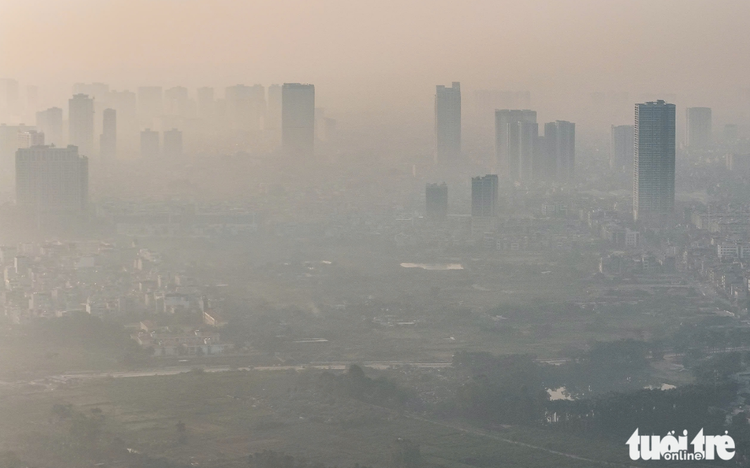
Ha Dong District, Hanoi is covered in thick smog. Photo: Danh Khang / Tuoi Tre
Data from air monitoring stations across Hanoi showed that air quality has remained alarmingly low over the past few days.
Dr. Hoang Duong Tung, an environmental expert, told Tuoi Tre (Youth) newspaper on Friday that the prolonged air pollution was attributed to reduced rainfall and poor atmospheric conditions that hinder the dispersion of fine particulate matter PM2.5.
“Pollution lingers since emissions remain uncontrolled and weather conditions aren’t helping," Dr. Tung explained.
“Normally, thunderstorms and heavy rains help clear the air, but this year, rainfall is minimal.
"If this continues, poor air quality could persist until the end of April.”
He also expressed concern that based on data from various ministries and agencies, air pollution levels in recent years are not decreasing as expected but are instead on the rise.
Despite decades of awareness and a series of legal measures introduced since 1993, Vietnam has yet to achieve meaningful improvement in air quality.
Dr. Tung stressed the need for stronger government leadership and more aggressive implementation of environmental policies.
Decisive directives on combating air pollution and focusing on green transport transition are needed.
He also recommended that Vietnam learn about successful international models, pointing to Beijing, which transitioned over 10,000 buses to electric mode within just two years.
Through policy incentives and massive investments, more than US$100 billion over a decade, Beijing has become a global benchmark for air pollution control.
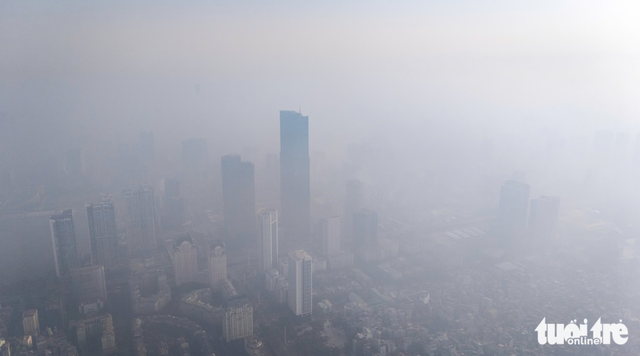
Air pollution in Hanoi is reportedly caused by heavy traffic, dust, trash burning, and industrial activities. Photo: Danh Khang / Tuoi Tre
Air pollution may cost Vietnam billions of U.S. dollars annually
The consequences of air pollution in Vietnam go beyond public health, extending deeply into the economy, Dr. Angela Pratt, the World Health Organization’s representative in Vietnam, told Tuoi Tre.
Pratt emphasized that poor air quality undermines productivity, damages crops and livestock, and reduces tourism revenues.
The World Bank estimated that Vietnam could lose more than $13 billion annually due to air pollution.
However, Dr. Pratt remains optimistic, suggesting that if Vietnam enhances efforts to combat air pollution, it will not just improve health outcomes, but also deliver social and economic benefits.
The environmental protection approach will accelerate the country’s progress toward its 2030 sustainable development goals, she said.
Need for comprehensive, flexible solutions
Associate Professor Dr. Bui Thi An, director of the Institute of Natural Resources, Environment and Community Development, said that while Hanoi has long had plans to fight air pollution, actual results have fallen short.
She emphasized the importance of tailored solutions.
“Each area faces different pollution sources. In inner-city districts, the culprits are mostly traffic emissions, while in rural areas, pollution stems from craft villages, small-scale industries, burning of straw, and construction,” she said.
Though some progress has been made, including phasing out coal-burning stoves, she warned that fragmented efforts will never be enough.
“We need a long-term, coordinated strategy,” she stressed.
She also threw her support behind the National Assembly’s upcoming review of environmental policy enforcement in late 2025, highlighting its importance of pollution control measures.
A representative from the Ministry of Agriculture and Environment told Tuoi Tre on Thursday that the ministry would soon begin auditing emission sources and setting annual targets for pollution reduction for all localities.
The ministry will also review legal penalties to ensure stricter enforcement against environmental violations.
It has been working on tools such as early warning systems and province-level air quality management plans.
Hanoi, Hai Phong City, Quang Ninh Province, Hung Yen Province, Nam Dinh Province, Thai Binh Province, and Thanh Hoa Province have already initiated their environmental quality control programs.
To speed up a shift to cleaner transport, the ministry plans to study incentives and financial support for electric vehicle adoption.
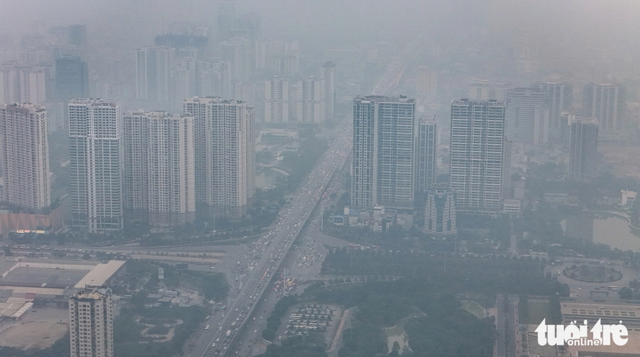
A view shows Hanoi amid air pollution. Photo: Danh Khang / Tuoi Tre
Hanoi takes local action
The Hanoi Department of Agriculture and Environment has begun implementing several key initiatives to reduce air pollution.
In addition to investing in electric buses and metro lines, the city is exploring smart technologies and digital tools to monitor emissions.
A pilot low-emission zone is set to launch in Hoan Kiem and Ba Dinh Districts, where vehicles failing to meet emission standards will be restricted during specific hours or in certain areas.
Moreover, Hanoi is checking pollution sources, evaluating current air conditions, and initiating a roadmap of green transition.
There are over eight million registered vehicles in Hanoi, including 6.9 million motorbikes, 72 percent of which are more than a decade old.
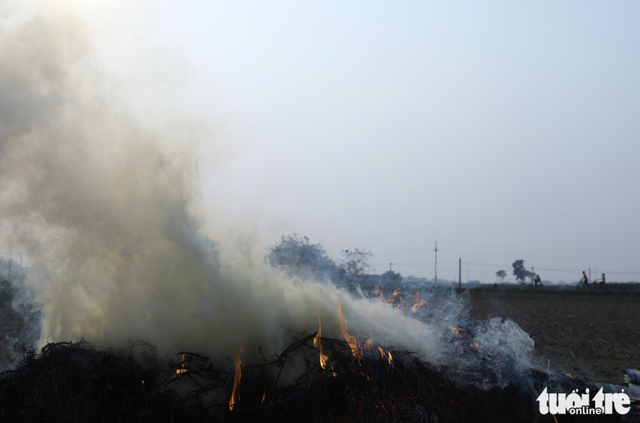
Straw burning is one of the reasons behind air pollution in Hanoi.
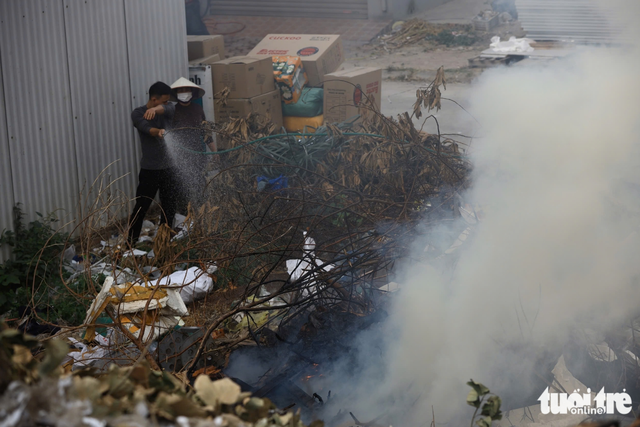
Trash burning contributes to air pollution in Hanoi. Photo: Quang The / Tuoi Tre


Max: 1500 characters
There are no comments yet. Be the first to comment.